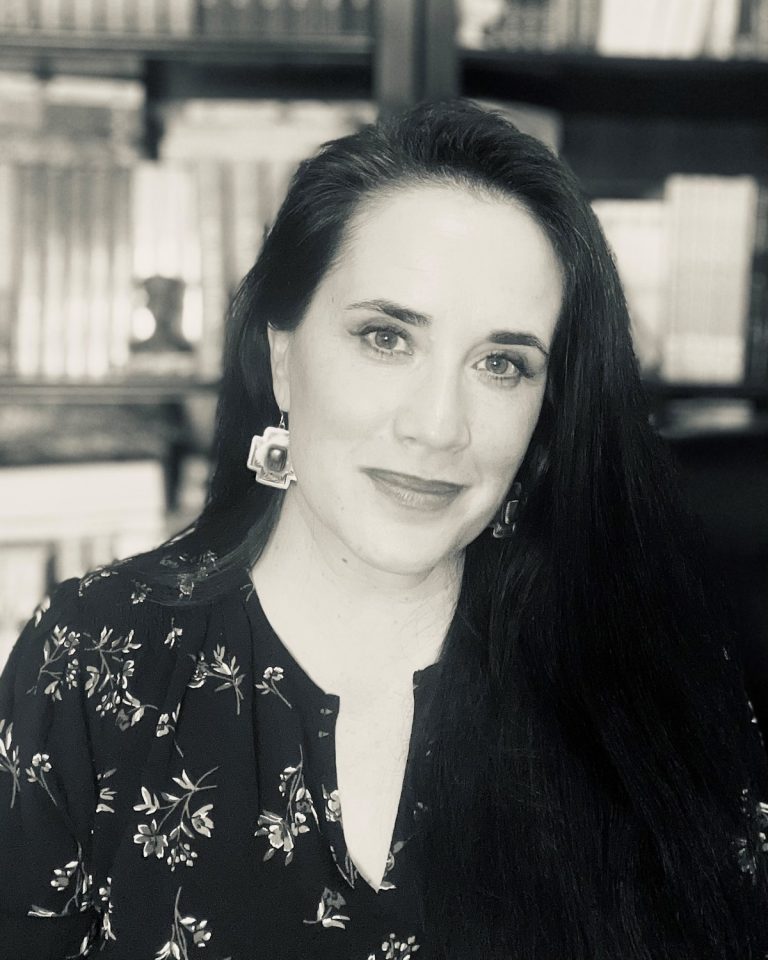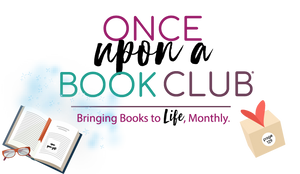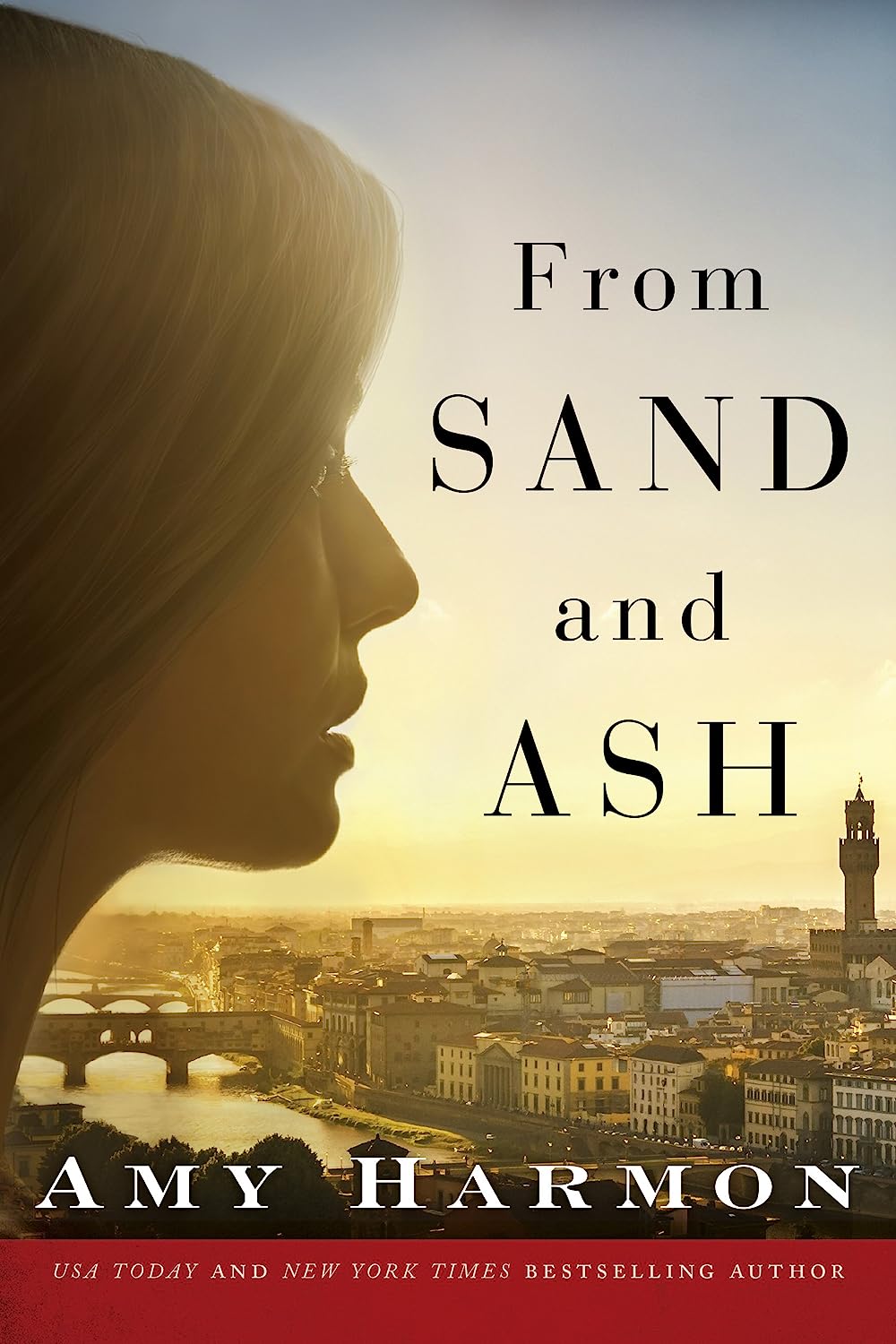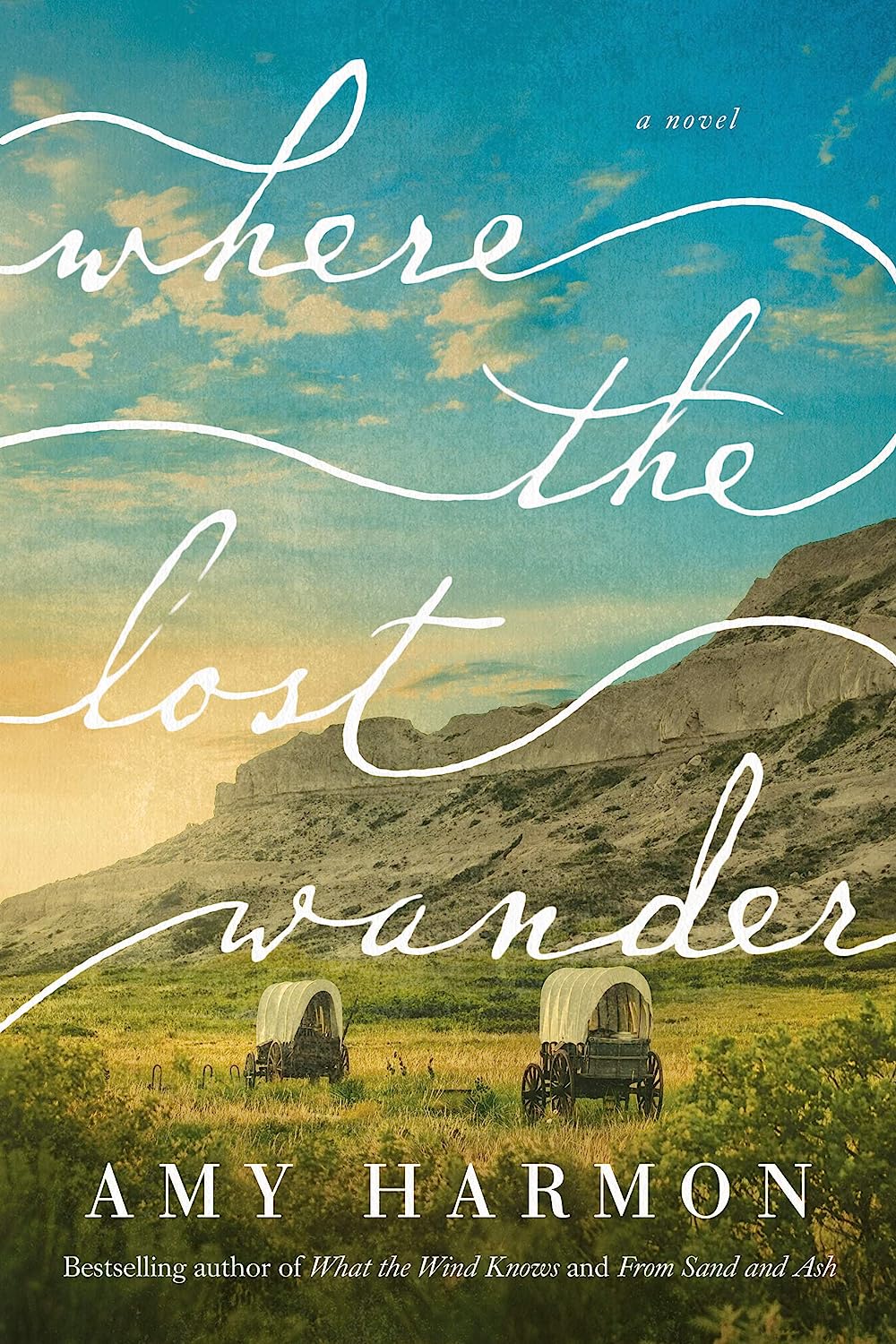
Meet Amy Harmon
Amy Harmon is a Wall Street Journal, USA Today, and New York Times Bestselling author. Amy knew at an early age that writing was something she wanted to do, and she divided her time between writing songs and stories as she grew. Having grown up in the middle of wheat fields without a television, with only her books and her siblings to entertain her, she developed a strong sense of what made a good story. Her books are now being published in more than twenty-five different languages, truly a dream come true for a little country girl from Levan, Utah.
Amy Harmon has written twenty novels - the Washington Post bestsellerWhat the Wind Knows, the USA Today bestsellers The Bird and The Sword, The Smallest Part, Making Faces and Running Barefoot, as well as the #1 Amazon bestselling historical From Sand and Ash,Where the Lost Wander, The Songbook of Benny Lament, The Unknown Beloved, A Girl Called Samson, The First Girl Child, The Second Blind Son, The Queen and The Cure, The Law of Moses, The Song of David, Infinity + One, Slow Dance in Purgatory, Prom Night in Purgatory, and theNew York Times bestseller, A Different Blue.
Amy Harmon was featured in the February 2017 Adult box for her novel, From Sand and Ash. The box hint was "2 Worlds, 1 Forbidden Love in Occupied Italy." She was also featured in the May 2020 Adult box for her novel, Where the Lost Wander. The box hint was "The Oregon Trail".
A Conversation with Amy Harmon
Author Amy Harmon was part of a From Sand and Ash readalong and answered some questions at the end of the week-long event. These responses were posted on her website, authoramyharmon.com. Please enjoy this transcription to learn more about this novel.
What was the hardest part about researching/writing all of this?
Amy Harmon (AH): The hardest part was the fact that EVERYTHING had to be researched. Clothing, weather, historical events, particulars of the war, the culture, the language, the violin, Angelo's birth defect, prosthetics, the Catholic religion, the Jewish religion, a day in the life of a priest . . . you get where I'm going right? It was endless.
How long did it take you to write From Sand and Ash? Did you have to put it down some days to give your brain a breather or did you write it consistently every day?
AH: I began my research first, just combing through a lot of different sources trying to pinpoint where I would focus. Once I had a window of time in the war where I could set my story, I had to get more and more detailed in my research. The research continued as I wrote the book. I didn't know, for instance about the Battle of the Bulge timeline (Bastogne). I stumbled across the fact that Bastogne happened in exactly the time frame I needed it to. Little miracles. But there were always difficulties and the research sometimes derailed where I thought I was going to go with the story or what I wanted to do. Even researching the routes to get to specific camps, etc. was tedious. All in all, I suppose this book took me about six months of pretty intense work to write. That doesn't count edits after the publisher received it, etc. Sure. I had to take breaks and step away. But usually, once I really get rolling on a project, I stick with it until it's done. I'm a firm believer that once you stop, it's really hard to get started again.
Was this the longest you've ever taken to write a book?
AH: Yes. No book has kicked my trash in quite the same way, and each one kicks my trash.
Have you ever taken violin lessons? Wondering how you chose which musical pieces to highlight?
AH: No. However, just like anything else, I had to research the violin. I listened to violin music, watched people playing the violin on YouTube, watched Itzak Perlman teach classes on the Violin - etc.
I'm always curious where a book starts? Did you start on page 1 and continue to the end or did you jump around a bit and connect it together later? Did you know the ending when you started?
AH: This one was particularly hard to organize. There was a great deal of time covered in order to accurately create the setting. I had to reconfigure the order several times and I rewrote the beginning several times. I usually write in pieces and then put them together, but with this book it was a double edged sword because I couldn't take too many liberties with the actual historical events.
You normally don't write historical fiction so what was your inspiration to take a risk and try a new genre?
AH:Making Faceshad some elements of a true setting being wrapped into a contemporary book (The attacks on 9/11 and the Iraq war). I like historical romance, always have. I am also a WWII buff. Many of my books are genre busters, though.The Law of Moseswith his spiritual gifts, orA Different BlueandRunning Barefootwith their Native American history weaved in,The Bird and the Swordfeels like medieval fantasy, which is also very different. I suppose I just want to write books that have some staying power, that will possibly grow in popularity rather than reflect a moment in time. I liked the challenge.
Did you ever consider having Angelo not physically break his vows? Emotionally yes, he had most definitely broken them, but I was actually surprised when he physically broke them as well.
AH: Actually, that was the one thing I was pretty sure of throughout my writing, that he would choose a life with Eva. I hope I built a solid case for why he made that decision throughout the book. Angelo had come to certain realizations about God and his relationship to him, his desires for purpose and immortality, and his true and, I would argue, righteous desires for his life. I would never want to urge a man who has made vows as a priest to do what Angelo did, but in the context of my story, of fiction, I also wanted my reader to understand why he did.
Did the book take an emotional toll on you like it does to the reader?
AH: Let's say it takes the reader a week to read the book. For that week, I have no doubt that I put my reader through the wringer. But just compound that by six months to a year of research, writing, re-writing and then publishing. When I published the book, I felt absolutely rejected in most quarters because not only had I suffered through the creation and research of the story, but people weren't buying it or reading it. It was emotionally devastating. BUT! It has begun to gain its own special readership, and my publisher has continued to make strides with sales. So. It has been worth the tears in the end. But yes. This book about killed me.
Did you stay in the different areas of Florence? Did you map it all out? And if so, did you visit various basilicas to get a feel for the period?
AH: I've never been to Florence. I have a friend who is a priest that talked to me about the art in Florence, about how he felt about the art, about how it directed his choices and helped him to actually become a priest. He inspired some of the feelings Angelo had. I did have to map things out and research what happened to Florence, where things were located, etc. Fortunately, my assistant was also living in Italy at the time, and she and her husband's family helped me when I had some very basic questions about Italy, like what would a family in 1943 actually eat? Especially one of mixed religions.
What was your favorite scene?
AH: Favorite in the sense of it bringing emotional relief? The love scene at Villa Medici. Favorite scene as far as being proud of the writing and the desire to capture my reader? Wow. I'm not sure. I have a few. But the chapters when Eva and Angelo are being questioned, the Caves at Ardeatine, the scenes in the cattle car, the emotional devastation of believing the other is dead or gone -- those scenes were incredibly powerful to write and bring to life.
What scene was the hardest/tearful one for you to write?
AH: Hardest? Actually, the scenes that are emotionally difficult are easier for me to capture. The things that are harder for me are the scenes with logistics - where the characters need to be at this moment, the description, the historical details, the history. Weaving that all in without making it feel like an info dump or losing the reader is always challenging. As far as emotionally taxing --- the whole book was emotionally taxing. I remember the Sunday I finished. I was done with the writing (pre-edit) and I just crawled into my bed and cried. I had made it to the end, and I knew, even though there was more work to do as far as polishing and correcting, that the hardest part was done. I was so grateful. I could have stopped so many times with this one because it was just that hard.
When you are writing the story do you see yourself as each character? If so, did you relate more with Eva or Angelo?
AH: I related more with Angelo. I have, from the time I was a little girl, had a very deep desire to have a relationship with God. I know that's a wild and crazy thing to say in this day and age, and some people may immediately feel uncomfortable that I've admitted it. But spirituality and religion are very important to me. Trying to balance my desires and my purpose and my roles as writer/mother/teacher/wife/ daughter/sister PERSON has been a struggle. I understand Angelo's desire to narrow his focus to God, because it feels like the most righteous, best choice. It feels like it can't POSSIBLY be the wrong choice. But he finds, through his journey, that there are more ways to have a relationship with God, to be a good, even great, person, and not serve him in the way we originally thought we would.
I know this book has touched and maybe changed many lives of who read it, my question is how would you say this book impacted your life?
AH: This book was proof to me that I could accomplish something that seemed almost impossible. I learned a great deal, but mostly, I conquered a personal Everest.
A special thank you to authoramyharmon.com for posting this conversation. Please visit authoramyharmon.com for more.
A Conversation with Amy Harmon
Author Amy Harmon was part of a Q&A with the Behind the Pages group and answered some spoiler-free questions. These responses were posted on her website, authoramyharmon.com. Please enjoy this transcription to learn more about this novel.
You have a personal connection to the story and the characters. Can you tell us about that?
Amy Harmon (AH): My husband and I both enjoy genealogy, and the real John Lowry, the main male character in my story, is his ancestor. We didn’t know much about him beyond the fact that his mother was Pawnee Indian. There was some question about whether his father was Cheyenne, but we know that it was a white man (a man also named John Lowry) who married his Pawnee mother and raised him in Missouri until the young John Lowry headed out west to make a future for himself. According to family history, he was “pale” enough to pass as a white man and because he’d been raised by one, he was able to live in a white man’s world pretty successfully. Little is known beyond bare facts, but it gave me somewhere to start.
From the prologue, we know something tragic happens to the family. Why did you decide to start telling the story with that?
AH: My editor thought maybe I shouldn’t start the novel with that because it might scare some readers away. But I felt very strongly about it. I knew the reader would have to be forewarned, otherwise the violence and the shock would be too much when it did come. I also thought it created some tension throughout the story that otherwise would not have been there. Much of the action in this book is simply the slow travel in a wagon train, so starting with that scene infuses the book with danger that it otherwise would not have had.
Can you tell us what it was like blending fact with fiction?
AH: Melding fact and fiction–that just requires knowing enough about historical settings and people that you can make a character that could live and blend into the time. I find it fascinating and fun!
What was your inspiration for Naomi?
AH: Naomi was tough in the way all the women in my family–particularly my mom–have been. Resourceful. Good. Smart. Determined. My mom’s maiden name was May, and it was her ancestors that were my family’s first pioneers. I think we look back on women in history as being somewhat subservient, and maybe they were in some ways–different ways that we are, for instance–but I also think they were incredibly strong and resourceful. Naomi May was named after my mother’s ancestry. My mother’s maiden name was May, and her family came across the plains and settled Utah in the late 1840s, early 1850s. Naomi made me think of my mom. Her brilliance, her beauty, her toughness, her commitment to family.
Do you plan out your novels ahead of time? Or do you simply let the characters and storyline take you wherever they go?
AH: I plan them in part–meaning I know the history, I know the characters, I know the main struggle, the overriding difficulty, that will plague them. I also know what it is each character desperately wants (or needs) so that their desire propels them (and me) forward. I don’t outline each chapter or know each twist and turn, but I don’t just start writing blindly either. I’ve usually assembled all my ingredients before I start “cooking.”
Do you have a vision of how life might proceed for the May and Lowry clan, in the future. The Civil War is coming and there will also be the development of the Buffalo Soldiers, who were used to “control” the Native Americans. You portrayed various groups so well and so fairly in this book, did you look to the future and see how things might go for the Mays/Lowry clan?
AH: Tragically, it wasn’t until after the Civil War that things got truly terrible for many of the western tribes. I actually have another relative who fought with Custer–he was a French immigrant who joined the army as a way to support himself as a young man in a new country. He was sent home right before the Battle of Little Bighorn for “drunkenness” –perhaps the only time alcoholism has saved someone’s life. But I wonder about the demons that must have haunted him. It was a terrible time. No two ways about it. The native people wanted to retain their lives and their ways, nomadic and untethered. And it was not to be. I look back on it like so many do and just feel sadness and helplessness. It didn’t have to be the way that it was . . . the Native people were treated so unjustly. And yet I can’t see how the way of life they’d enjoyed for a thousand years could have continued. It was untenable. And that is the sadness that permeates all of Native American culture and history. As far as the second part of your question, I simply looked at how things continued on for the real John Lowry. He made a life for himself in a small settlement and raised a family, who raised a family, and so on. Chief Washakie also managed to retain the lands of his father, and the Shoshoni lands still belong to the Shoshoni people. But as beautiful as those lands are, and as positive an example Chief Washakie was to all people, it is still sad. There is no happy ending because it WAS an ending, and it felt inevitable. It still feels inevitable. I’ve visited the Shoshoni lands in Wyoming, and their is a feeling in the air that I can’t even begin to put words to.
Have you thought about a sequel at all?
AH: I don’t write thinking about sequels, actually. Sometimes one will come to me, but usually it is a story that branches off with a new character, for instance one of the May boys might get a story of his own at some point. Wyatt, Webb, or Will. Who knows? Or maybe they all will. I wish I had the time and stamina and mental strength to write all the stories that whisper to me.
What would you like your readers to get from your books? Is there anything you would like to share with us?
AH: This time in history is actually looked at with a great amount of derision. We tend to judge people in groups, and depending on who is out of favor in society, their history gets derided or scorned. I think the thing that writing and studying history has revealed to me is that people are just people. Good, bad, selfish, saintly. Painting all history or all people in big strokes of blame or condemnation is unfair and it also robs us of the lessons of history. There is so much to learn and appreciate in historical fiction. It teaches us about ourselves. It helps us ask questions. It helps us forgive and forge ahead on better paths. I would hope that readers will not only be entertained and edified by my stories, but that they will learn about themselves too.
A special thank you to authoramyharmon.com for posting this conversation. Please visit authoramyharmon.com for more.
Featured Books
From Sand and Ash
Italy, 1943—Germany occupies much of the country, placing the Jewish population in grave danger during World War II. Featured in February 2017.
Where the Lost Wander
In this epic and haunting love story set on the Oregon Trail, a family and their unlikely protector find their way through peril, uncertainty, and loss. Featured in May 2020.






